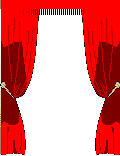

A symbol is an object that points to a reality beyond itself.
Webster's Dictionary defines a symbol as "an object that stands for, or suggests, something else by reason of relationship, association, convention or resemblance". In life we surround ourselves with symbols. A green, three-leaved shamrock stands for Ireland, a thistle for Scotland, a rose for England. When a pilot carries four stars on his uniform we recognise him as the commander of the aircraft.
People who do not understand the meaning of a symbol miss what is really going on in life. The point we shall be making in this reflection is that, to an amazing extent, all objects are symbols and that we need to learn to see the deeper dimensions of things.
When a child is born, its eyes are open. The same rays of light that give vision to adults fall on its retina. But the child cannot see. It observes a disordered tangle of lines and colours. It needs months before it can make out faces, distinguish objects, perceive gaps, judge distances, and recognise their relative position in space. Ordinary seeing has to be learned in a painstaking process .
Also the social dimensions of seeing can only be acquired by effort and experience. One of these is 'seeing with empathy', that is: seeing with an understanding of the mind and the heart.
Suppose we observe a young woman leaving a shop every day at about 5 pm and running in a particular direction along the pavement. Although we may witness this regularly, we remain outsiders to the event because we do not know the why or wherefore. If we were to find out that the woman is a young widow who has a small daughter in a kindergarten half a mile down the road; that after finishing her work at 5 pm she hurries to the school to take charge of her child, afraid that it might come to harm if left to itself-then, all of a sudden, we start seeing the event with new eyes. We grasp the mother's love and anxiety for her child; we understand her fear of losing her job and feel something of the pressure of lonely responsibility that rests on her shoulders. We are now seeing with human depth, with empathy. Small traits of her behaviour, which would otherwise have escaped our attention now have a new meaning for us. Some people never learn to see in this way. They are not open to the 'disclosures' that make us see the inner life of other people.
Then there is the art of mystical seeing. Religious people learn to recognise 'disclosures' of a deeper Reality. They perceive in what happens around them an unexpectedly new dimension: an existential, metaphysical dimension; a dimension related to the most important questions of life.
A religious person who watches children play in a park radiating joy and vitality, will 'see' in this happy scene a manifestation of such mysteries as the will to live, the search for individual fulfilment, participation of time-bound events in an eternal reality. His/her eyes see beyond the apparent semblance of things. It means that this person, somehow or other, sees God even though God is actually invisible.
Heb 11, 27 makes a remarkable statement about Moses. It says Moses achieved great things because of an unusual gift: eyes that could see what cannot be seen. This is how various Bible Versions translate the expression:
In this paradoxical statement the Bible offers one of the best definitions of a spiritual person.
In this part of the course I hope to show how we may gradually develop our potential for such a mystical vision. It is, of course. not an ability that can be acquired from books. Real progress will only come about through a personal discovery of the transcending dimension, a discovery that is successively strengthened by an ever-growing sensitivity. However, the advice of spiritual teachers will help us to make the discovery or to deepen its impact.
To help us acquire the new attitude it pays to read the books of Romano Guardini. 2 This great spiritual writer of our own times has put in modern language what religious people of all ages have asserted: that we are blind if we do not see the other-worldly aspects inherent in all reality. Guardini works this out in a coherent view.
All things are symbols as well as objects. This means that, apart from whatever physical reality they are, they point to another reality beyond themselves according to their limited, physical nature; they are symbols because they possess a meaning over and above their own physical being.
A flag is not just a piece of cloth with colours on it (its physical nature), it symbolises at the same time the independence of a nation, thus going far beyond its physical nature. When we see a flag, we take in at one glance both the physical reality and the symbolic value it stands for. In the same way, an unspoilt and liberated view of things shows us both their physical entities and the dimension they point to as symbols.
On a deep level, all objects in our world are symbols of Ultimate Reality.
We might put it in this way: all things have a recognisable borderline aspect. They carry their own limitedness in themselves. By their own nature they are seen to depend on the Source of Being. They have an in-built polarisation towards purposes outside themselves.

Think of a spider in its web for example. Catching its prey requires a complicated and elaborate plan. The spider chooses an appropriate place, hangs out a superb net, covers it with a sticky substance and knows how to entangle its victim once it gets caught. What is remarkable is not only the astuteness of the plan itself, which exceeds the spider's own capabilities, but the fact that there is a plan at all. We live in a world in which planning is an essential part.
Or consider the mathematical precision of the web itself. We find in it patterns that recur throughout the universe, expressing fundamental properties of matter in space that can be verified on the scale of the molecule as well as of giant galaxies. So we see in the spider's web an expression of the universal laws of matter and the questions which this raises.
I know that scientists will be inclined to answer here that the spider's behaviour can be explained by inborn instructions acquired through evolution, but such a reply misses the point. While looking at the spider in its web, we perceive fundamental realities of our existence which cannot be explained either by this spider itself, or by all spiders taken together, or by the mere chain of evolution. Because even in the whole process we would again meet with the 'borderline' experience of aspects pointing to the Beyond.

Guardini says that all objects are windows to what is invisible. They are stepping-stones on our way to transcendence. They may be considered as lamps radiating eternal values or rather apertures, cracks, through which the eternal becomes transparent. A mighty storm, for instance. may lead us from an appreciation of brute force to an acknowledgment of force as such. The fierce cyclone that uproots trees and ravages the countryside may become the aperture through which we get a glimpse of what power means, including the Power that must be at the very root of being.
Whatever exists is the image of an idea, not only because we grasp it as an idea but because the idea itself was there first.
Objects are individual forms of universal values. They are mirrors reflecting transcendent realities. When we see a cat looking after its kittens we are actually looking at love as such. The love of the cat may be limited and instinctual; yet it points to the reality of love as such, linking it up with human love and referring somehow to the mystery that love exists at all. If the concern of the mother cat has any value- and who would deny this?-, we are touching the value and existence of love as such, also of the extra-temporal Love that must somehow be at the root of being.
What we should learn is that discovering these wider dimensions in objects is not just the adding of theoretical reflections. It is also a question of a different way of seeing. Just as when we look at the face of a person we know and see sorrow or happiness, and not merely the skin on his face, so when we watch the spider we see in it pointers to realities beyond.
Paul stated, "Ever since God created the world, his invisible qualities, both his eternal power and his divine nature, have been clearly seen; they are perceived in the things that God has made" (Rom 1, 20). Paul did not say that God's invisible qualities were deduced by reasoning; he said that they were seen. He stated that they are perceived in the things that God has made. Neither our intellectual, nor our religious seeing can be separated from the way we look on things. The human eye is more than a mechanical camera. It is an instrument of perception for the whole man, Or, to put it in Guardini's words:
''The roots of our eyes lie in our heart . . .
Ultimately our eye sees from within the depth of our heart."
It is essential, therefore, that you uncover symbols in your daily programme of silent meditation.
Having rid yourself of everyday noise and distractions, you should spend time in carefully considering the many symbols through which divine reality speaks to you. It is not the astuteness of our reasoning or the appropriateness of our words that matters. Having put ourselves humbly in the presence of God, we should ask God to open our eyes and to make us discover the unseen dimensions of his/her presence.
We should try to take some of this attitude with us throughout the day. While listening to other people, observing plants or animals in nature, or watching a programme on TV-, we should keep alive our awareness of the symbolic value these experiences may have for us. We should refuse to remain at a superficial level. We should be prepared for 'apertures', cracks in reality, 'windows' so that we can 'go beyond'.
When we reflect on scriptural passages, when we allow its images to get hold of us, we should constantly feel in our hearts the search for living contact with the God who addresses us through the inspired text. In great reverence for God's word, we should listen with undivided attention and silence to the deeper meaning of what God says. We should observe Jesus' words and actions as 'signs' (John 20, 30), signs which lead us on to understand the unspeakable.
Of special importance to us should be the occasions when we visit a sacred place (a church, temple, mosque or whatever) or when we participate in a function of worship or prayer. We should remind ourselves from the outset that we are then in surroundings particularly aimed at linking us up with divine mysteries. We should be determined to make our whole personality, body and soul, express its desire for God through the symbolic rites and actions.
Text from: JOHN WIJNGAARDS, Come and See, Bangalore 1983.